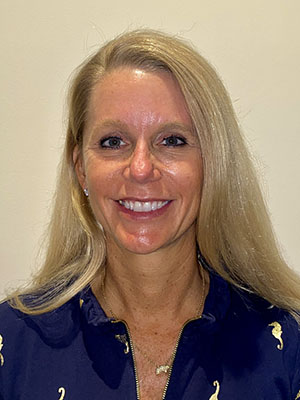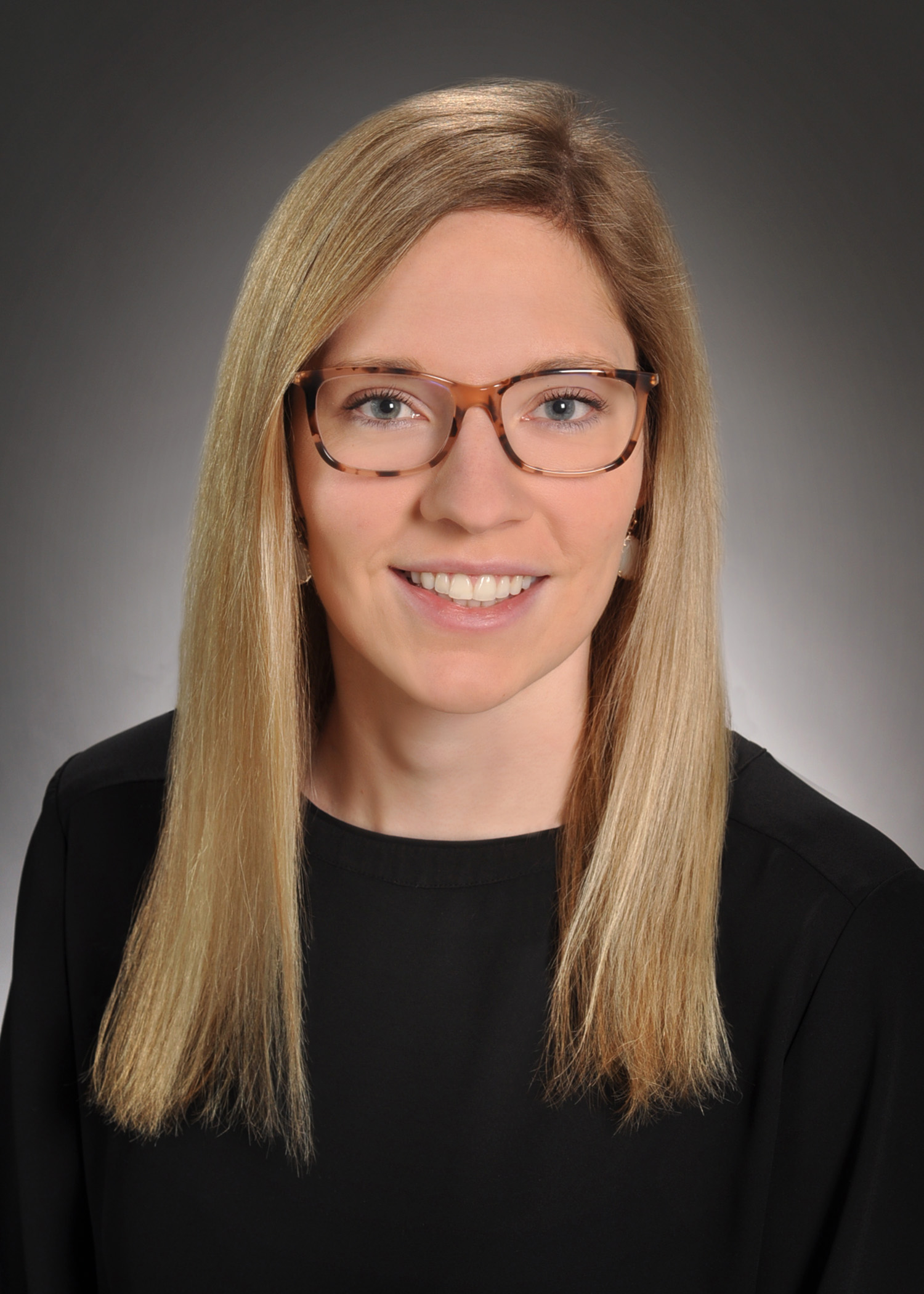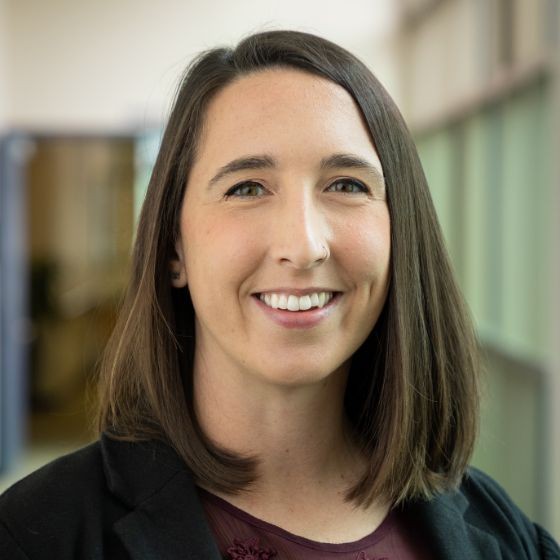Session Details
Safe Sleep and Child Passenger Safety
Grand Salon A/B/C/D
2. Understand a variety of interventions to improve safe sleep and parenting
3. Understand ATV injuries and how they are treated

Medical Director - Emergency Behavioral Health Services
Connecticut Children's
Research Scientist, Connecticut Children's Injury Prevention Center
Associate Professor, University of Connecticut School of Medicine

Center for Healthier Communities – Rady Children’s Hospital – San Diego
Coordinator, Safe Kids San Diego
Program Coordinator, Injury Free Coalition for Kids
Perceptions of Childhood Injuries and Safe Sleep Practices Among New Parents: What They Know Versus Reality
Children's Memorial Hermann Hospital
mary.grace.k.chiu@uth.tmc.edu
Mary Grace Chiu, BS
Madison Tuazon, BSA
Sandra McKay, MD
A decade review (2008-2017) by the Harris County Child Fatality Review Team (HCCFRT) recorded 2,260 child deaths from non-natural causes. They found that the leading non-natural cause was infant sleep-related deaths, which made up 32% of deaths for children under 18 years old, but accounts for 78% of all deaths for children under 1 year of age. Other causes of child death reviewed by HCCFRT include firearm-related deaths as the 2nd leading cause of death (13.8%) and drowning ranking 4th (9.6%). With the multitude of causes of death for children, increasing awareness and disseminating safety information continues to be an important method for prevention. This study focuses on the current safe sleep practices and perceptions of common childhood injuries by parents.
An IRB-approved cross-sectional observational study was conducted with caregivers of newborns 4 weeks of age or under via an online or printed survey from 11/15/2021 - 05/25/2022. The anonymous survey was administered to 103 caregivers at an outpatient clinic. Descriptive analysis was performed. Questions with multiple responses for questions that required only one answer or left blank were excluded from analysis.
86% (86/100) of caregivers reported laying their infant on their back to sleep, and 22% (22/101) reported using at least one unsafe item with the child when sleeping (pillow, loose blanket, propped up bottles or stuffed toys). In total, 72% (73/102) of caregivers reported receiving education about safe sleep practices in the hospital. 59% (13/22) of caregivers who reported having an unsafe item with the child while sleeping also reported receiving safe sleep education in the hospital. Of those who received safe sleep education, 41% (30/73) of them reported at least one of the following (1) having an unsafe item in bed, (2) recorded not having the baby in their own crib or bassinet, or (3) responded neutral, disagree, or strongly disagree to the statement “It is dangerous for an infant to sleep in the same bed as a parent.” Of all respondents, 73% (73/100) agreed or strongly agreed that sleeping in the same bed with an infant is dangerous. Most caregivers disagreed or strongly disagreed that drownings, falls, or firearm injuries were problems impacting children.
Despite receiving safe sleep education, over a third of caregivers engaged in unsafe sleep practices or did not perceive co-sleeping as dangerous. Interestingly, among the caregivers who utilized an unsafe item with the infant during sleep, more respondents received safe sleep education than not. It would be interesting to explore this finding further to determine if it is consistent among a larger sample. In other areas of injury prevention such as drowning and firearm injury, despite the prevalence in Harris County, parents fail to perceive the risk. Further studies should be conducted to determine if increased education on the rates of injury in the community would impact perceived risk.
Describe current safe sleep recommendations and actual sleep practices in new caregivers.
Gauge the occurrence of safe sleep education recalled by new caregivers.
Explore caregivers perceptions of safe sleep practices and preventable childhood injuries.
A Standardized Approach to Child Passenger Safety Screening in the Emergency Department

U Health/Jackson Health System
Heidi Almodovar, DNP, APRN, CPNP-AC/PC, TCRN, CPS-T
Lyse Deus, M.Ed, CPS-T
Oneith Cadiz, MD
Hector Chavez, MD
Chad Thorson, MD, MSPH
Nationally, motor vehicle collisions (MVCs) are the leading cause of death and injury in children aged 1-19 years old. A significant number of children in the United States remain improperly restrained with nationwide estimates around 20%. The Centers for Disease Control and Prevention report that Florida’s children are dying from MVCs at higher rates than children in other states. A retrospective analysis of 434 trauma patients at Ryder Trauma Center found that children ages 0-18 years-old were improperly restrained or unrestrained 53% of the time. Injury Free Miami is a pediatric injury prevention coalition (PIPC) with nationally certified child passenger safety (CPS) technicians. Upon review, the PIPC has never received referrals from Holtz Children’s Hospital Emergency Department (ED) which represents a missed opportunity to provide CPS education and resources to underserved families in our catchment area. The purpose of the quality improvement (QI) project was to standardize an approach to CPS screening in Holtz Children’s Hospital ED. The overarching aim was to increase referrals to the PIPC, while improving CPS education and access to CPS restraint systems which will address health equity and social determinants of health in our patient population. This project is relevant to any organization that does not currently have a standardized approach to child passenger safety screening and is attempting to address social inequities in underserved populations.
Organizational change processes were identified, and QI interventions were created and implemented through development of a CPS bundle. As part of regularly provided ED medical care, CPS screening was completed for families with children ages 0-12 years. Screening took place from the end of December 2021 until April 2022. The primary outcome measure was the total number of families referred to the PIPC.
The total number of referrals to the PIPC was 98 children over a 20-week period. Of those, 142 were directly screened and referred to the PIPC from the ED, 26 came from families who received the PIPC’s phone number as part of discharge teaching and called directly. The remaining 30 came by word of mouth from families who had been previously referred to the PIPC from the ED. Data collection, including demographic information, is ongoing.
A standardized approach to CPS screening in Holtz Children’s Hospital Emergency Department increased referrals to a PIPC and improved CPS education and access to CPS restraint systems. With increased car seat and booster seat utilization, we anticipate this to translate to improved outcomes after MVC in our underserved community.
1. Participants will learn about the continued problem of MVCs in unrestrained and improperly restrained children. 2. Attendees will hear about the individual steps involved in creating a CPS bundle. 3. Observers will understand the pitfalls encountered during implementation of the CPS QI initiative and learn about additional interventions to help make the CPS QI initiative sustainable and successful.
Data driven approach to car seat distribution within primary care sites

Children's Wisconsin
Ashley Mahnke, MBA, CHES, CPST-I
Jane Howard, MS, CPST-I
Diana Barany, MBA
Jacqueline Whelan, MN, RN, CLN
Megan Sheble, BS
Anastasia Brennan, MSN, MPH, RN, CPN
Car seats are expensive and can present a significant barrier for families with limited income and financial instability. Understanding motor vehicle crash (MVC) injuries within our health system helps create direction for our child passenger safety (CPS) programming while aligning with the hospital’s system goals of addressing sDoH to improve health and equity for families. By using a data driven approach, it was clear there was an opportunity to expand car seat services to certain primary care locations. The aim of the project is to use the data to understand which clinics have the greatest need for car seats and safety education to be provided for their children.
A data driven approach was taken to analyze MVC injuries presenting in our urban level 1 trauma center. To understand the health disparities related to MVC the CPS team partnered with health management, and Department of Transportation (DOT) to collect data. The health management team created an insight data report to tracked children presenting in ED/UC with a chief complaint of MVC. The report includes information on who is being injured in crashes, their age, race, ethnicity, acuity of injury, and primary care provider (PCP). Two clinics were identified based on highest number of children presenting in the ED/UC for MVC, social economic factors contributed to the selection of the sites, based on geographic location, these sites serves some of the most vulnerable populations in our system, and have a higher proportion of children and families with documented financial instability. In addition to ED/UC data, the department of transportation was able to contribute crash data within a geographic area by the two clinics.
In 2021, 317 children presented in the ED/UC with a chief complaint of MVC and had a PCP from one of our 20 primary care locations. The two identified clinics totaled 24% of the MVCs presenting in the ED/UC and had the most MVCs out of all other locations. The crashes occurring in the geographical neighborhoods of the clinics highlights a need to provide car seat services. In 2021, 2,265 people were injured in crashes within a 2.5 mile radius of the identified clinics and 63 of 187 children were injured as a result of the crash.
Based on the initial findings, the data has indicated a substantial need to provide car seat education and distribution from the two identified community clinics (Midtown and Next Door Pediatrics). Our next steps is to collaborate with staff at the clinic to pilot the car seat educator model to distribute car seats to identified families when they are there for a well-child appointment. The program could have greater reach, especially into the most vulnerable communities. Upon successful pilot, this model will spread to all primary care sites.
Describe how to create data reports and collaboration with partners to understand health disparities.
Understand how to use a data driven approach to expand car seat programming to primary care clinics.
Learn about clinical integration to address health equities in underserved locations.
Improving Timeliness of Car Seat Consults for an Inpatient Population

Program Manager, Safety Center
mwilliams3@childrenswi.org
Maisie Williams, CPST
Robyn Woolever, MSN, BSN, RN-BC
Our urban level one trauma center has a comprehensive hospital based car seat program funded through our hospital and the Department of Transportation. Car seats are provided to families who are identified as not having safe transportation home. While a car seat consult should be entered into the electronic health record (EHR) at the time of admission to allow for a timely car seat distribution prior to hospital discharge that did not always occur. The purpose of our program was to develop a process to assure that car seat consults were placed at the time of admission to allow for timely patient discharge.
Focus groups with the Clinical Nurse Specialists and the Discharge Optimization Leader were led by hospital car seat staff. We requested an EHR report to understand when car seat consults were being placed. Then we developed a Best Practice Advisory (BPA) in our EHR to improve timing of the car seat consult.
Focus groups themes included placement of a car seat consult occurring late in a child’s hospital course and this late consult delaying a child’s hospital discharge. From our EHR report from 02.14.2022 to 04.12.2022, we found that 53.3% of consults for standard car seats were entered on the day of discharge. A BPA that prompts the ‘Car/Booster Seat Available’ question was developed for patients who have been inpatient for over 24 hours and the expected discharge date is a day after tomorrow and for patients who have been inpatient for 8 hours with an expected date of discharge being tomorrow.
BPA’s may be used to improve timeliness of car seat consults for inpatients. Next steps are to examine whether BPA’s improve timeliness of a car seat consult and thus a timely patient hospital discharge.
1. Learn about how delays in placing car seat consults at a hospital level were affecting discharge timelines.
2. Explore how the car seat team with the discharge optimization leaders formulated a report to see if the word of mouth stories were true about last minute consults.
3. Understand how to craft a best practice advisory to remind inpatient staff when they need to place the car seat consult if warranted.
Pandemic Parenting: Virtual Safe Baby University for Pregnant and Parenting Teens

Trauma Services
Dell Children's Medical Center
katie.mitten@ascension.org
Katie Mitten, LMSW, CPST
Safe Baby University (SBU) is a program that has been implemented by the Injury Prevention Team at a Level I pediatric trauma center for over a decade. The goal of SBU is to teach new or expectant parents under the age of 18 best practices for keeping their child safe at home, on the go, and at play. Upon completion of the program parents receive a variety of safety resources tailored to their unique needs. Prior to the COVID-19 pandemic the program was implemented in person primarily at local high schools. In order to continue to provide the education and resources to young parents a virtual version of SBU was created and implemented in 2021 and 2022. Funding for this program comes from the hospital and hospital foundation.
The new virtual format includes video presentations by local injury prevention experts, discussion guides for facilitators to use following the viewing of each video, and live virtual follow-up question and answer sessions with the Injury Prevention Team at a Level I pediatric trauma center and other community safety experts. Currently the virtual SBU program includes four topics: child passenger safety, safe sleep, water safety, and home safety. Parents who participate in the program are asked to complete pre- and post-surveys for each of the topics. In order for schools to participate they must identify staff who will lead the facilitated discussion with the parents and schedule the virtual question and answer with the Injury Prevention Team.
An initial evaluation of the effectiveness of this new virtual format shows that parents are retaining the knowledge and skills taught during SBU. Additionally, the virtual format requires less of our injury prevention team's time to implement allowing the program to reach a wider audience with less staff time dedicated to the program.
We believe this virtual model, that includes videos, interactive guided discussion, and virtual question and answer, is relevant to other injury prevention professionals interested in educating young parents on best practices for keeping their child safe. We will continue to implement and evaluate SBU, and potentially explore a hybrid format for topics like child passenger safety in order to provide hands-on demonstrations.
- Key components of our virtual program for teen parents focused on increasing knowledge, skills, and behaviors that promote child safety.
- Opportunities and challenges COVID presented for implementation of community education programs like SBU.
- Findings from our initial evaluation of this virtual program.
Installation Misuse Observed During Virtual Car Seat Safety Appointments
Child Injury Prevention & Wellness Program
Injury Free Coalition for Kids (Randall Children's)
Child Injury Prevention Health Educator
scosenti@lhs.org
Katie Downie, RN
Carlos J. Hernandez-Morfin, BS, CPST
Mubeen A. Jafri, MD, FACS, FAAP
Amber Kroeker, MPH,
Scotti Reed, CPST
The Injury Prevention Program at Randall Children’s Hospital in Portland, Oregon pivoted to virtual telecommunications following the COVID-19 pandemic beginning in March 2020. We were able to use this unique opportunity to examine the efficacy of virtual car seat safety education appointments compared to in-person appointments. We sought to compare observed virtual seat appointment misuse with documented in-person car seat misuse rates. Our examination shed light into challenges of proper car seat installation prior to baby’s arrival and demonstrated the potential for using virtual seat appointments even when in-person activities are safe to resume.
We examined all expectant caregiver car seat installation data from virtual car seat appointments performed from January 2021 to December 2021. Over 98% of these appointments (N=206) were for rear-facing only infant car seats with a stay-in-car base; only 3 families planned on using a convertible car seat from birth. Car seat appointments were conducted by a certified child passenger safety technician via FaceTime, Zoom, or Skype. Detailed information regarding the initial and final installation were entered into a spreadsheet for tracking and data collection purposes. No personally identifying information was tracked. Calculations were performed in Microsoft Excel.
In the 206 car seat installations that were observed, 83.5% of car seat installations (ie, non-harnessing components) required adjustments to be suitable for a newborn infant. On average, a misused seat had 1.5 individual misuses. Most common misuses were recline angle (62.8%), seat-specific violations of the manufacturer’s instructions (20.3%), use of both lower anchors and seat belt (15.7%), loose lower anchor webbing (15.1%), and use of lower anchors in a prohibited position (11.0%).
We observed high rates of car seat installation misuse over 12 months of virtual car seat appointments. This data does not include seat misuse that may occur after baby arrives. Access to education for car seat installation and proper use are essential components of a hospital based injury prevention program. The ability to continue this service in a virtual format has been effective in identifying and correcting car seat installation misuse and should remain an option for families in the community, both in preparation for and after baby’s arrival.
Understand the efficacy of virtual car seat safety education appointments by comparing misuse data discovered during in-person check appointments to misuse observed during virtual sessions.
Examine the rate of car seat installation misuse for expectant caregivers.
Identify the most common rear-facing only car seat use errors and installation trends.
Randomized Controlled Trial on the Effect of a Specially Designed Children’s Book on Safe Sleep Attitudes, Knowledge and Practices

Departments of Pediatrics and Emergency Medicine
University of Iowa Carver College of Medicine
Paula Valino Ramos, BS
Pam Hoogerwerf, BS
Penny Smith, BSN, RNC-NIC
Carolyn Finley, MSN, RN, CNL
Morgan Swanson, BS
Uche Okoro, MBBS, DrPH
Charles Jennissen, MD
Our study objective was to identify the sources mothers learned about safe sleep practices and determine if a specially designed safe sleep picture book increased knowledge, attitudes and/or practices of mothers over traditional methods such as written pamphlets/handouts and other background educational influences regarding safe sleep.
From November 2019-September 2020, expectant mothers at obstetric clinics in an academic tertiary care hospital received gift boxes at their 28-week prenatal visit that included a safe sleep informational card hand-out. In addition, gift boxes were randomized to have or not have the safe sleep children’s picture book, “sleep baby, safe and snug”. Those consenting to participate were surveyed at their 28-week prenatal and postnatal visits about safe sleep knowledge, attitudes, and planned or present practices regarding their infant’s sleep. Unfortunately, after the study began, most mothers did not have an in-person postnatal visit due to the COVID-19 pandemic. Thus, text messaging was used to contact participants to encourage them to take the postnatal survey on-line. Frequency, chi-square and Fischer’s exact test analyses were performed using Microsoft SAS software, V.9.4.
Eighty percent (814/1023) of eligible women completed the prenatal visit survey. Of these, 44% (355/814) completed the postnatal survey. The most common source participants stated they had heard, seen or read anything about safe sleep was from a healthcare provider (90%), while the second most common was from friends/family (60%). About two-fifths of recent mothers stated they had heard, seen or read something about safe sleep from books (43%), social media (42%) and during prenatal classes (38%). Few had received information about safe sleep from magazines (7%) or TV/radio (5%). Although all participants received a safe sleep informational card hand-out in their gift box, only 53% reported they had heard, seen or ready anything related to safe sleep from a handout or pamphlet. Less than three-fifths (56%) of those that had received a safe sleep picture book in their gift box reported having heard of or read the book. However, of those that did, over half (54%) reported having learned from the book and over two-fifths (41%) reported having shared information from the book with others. Despite this, we found no significant differences between participants regarding their safe sleep knowledge, attitudes or infant sleep practices by whether they did or did not receive, did or did not hear of, or did or did not learn something from the safe sleep picture book.
Only about one-half of recent mothers reported reading anything about safe sleep from a handout or pamphlet when all of them had received at least one such item. Almost three-fifths that recalled receiving a specially designed safe sleep picture book reported learning from the book; such items may be more useful in sharing safe sleep messages for some populations than handouts and pamphlets.
1. Participants will be able to name the two most common sources from which mothers hear, see or read anything about safe sleep.
2. They will be able to identify a common type of educational method regarding safe sleep that is often ignored by mothers.
3. Attendees will be able to describe an innovative method to share safe sleep information that may be effective for some new mothers.
Evaluation of 2019-2020 Pediatric ATV Injuries in a Children’s Hospital
UAB School of Medicine
Pronouns: she/her/hers
brannen@uab.edu
Brannen Uhlman, MD Candidate
Michele H. Nichols, MD
William King, DrPH
Kathy W. Monroe, MD
All-terrain vehicles (ATVs) are a significant cause of morbidity and mortality in children. Annually, over 100 pediatric ATV-related fatalities and >30,000 emergency department (ED) visits occur in the US. The Consumer Product Safety Commission (CPSC) cited a significant decrease (38%) in ATV-related ED visits from 2009-2018. Our study objectives were to: evaluate changes in the number of ATV injury visits in a pre-covid vs covid time frame, provide a descriptive epidemiology of our ATV injury visits, understand the impact of median household income and population type on amount ATV injuries, and realize preventative strategies for education intervention.
A retrospective review of children < 16 years old (yo) presenting to our pediatric hospital ED who were coded for ATV injury during 2019-2020 was conducted. An ATV patient database was developed and managed using Excel. This study was approved by our institutional IRB. Student t test and z test for proportions were utilized for statistical comparisons. National Center for Health Statistics was used to compare county population types.
There were 405 pediatric ED visits for ATV injuries January 2019 – December 2020. Overall, 77% were white. Ages ranged from 1-16 yo with an average age 10 yo (S.D.= 3.9). In 1-4 yos, 66% were passengers, 30% drivers. After 5 yo, >50% were drivers. Most common insurances were Alabama Blue Cross (45%), Medicaid (40%). A significant increase in ATV injuries occurred between 2019 to 2020. By comparing seasons, we found increase in spring (30%), fall (72%), and winter (52%) 2020 compared to 2019. Orthopedic injuries were the most common (60%) while 12% of injuries were brain and/or spinal cord injuries.
We found 40% and 60% female vs male with no significant difference in gender distribution by disposition, and no significant difference in ages for admitted vs discharged (t= 0.93, p=0.3). The range of length of stay for the discharged was 1-9 hours (average 3.5 hours) and admitted was 0-70 days (average 5.2 days).
We found a bimodal distribution among the counties. With median household income, the peaks were $30,000-39,000 with 5.7 ATV injuries per 10,000 children and $70,000-79,999 with 6.3 injuries per 10,000 children. With population types, the peaks were "large fringe metropolitan" with 9.4 injuries per 10,000 children and “noncore” with 4.2 injuries per 10,000 children.
Most ATV injuries occurred in whites with 62% male, 39% female. Orthopedic injuries were most common. There was a bimodal distribution of injuries among the patients’ counties when evaluated by median income and population. Year 2020 had 2.2 times the rate of ED visits compared to 2019 (5.2 ATV injury visits per 1,000 ED visits in 2020 and 2.4 ATV injury visit per 1,000 ED visits (z=8.1, p<0.0001)). When comparing seasons, we found the greatest difference was fall 2020 (72% increase) vs 2019. The steady increase is the inverse of the national trend found by the CSPS.
To evaluate changes in the number of ATV injury visits in a pre-covid vs covid time frame, to provide a descriptive epidemiology of our ATV injury visits, to understand the impact of median household income and population type on amount ATV injuries, and to realize preventative strategies for education intervention.
